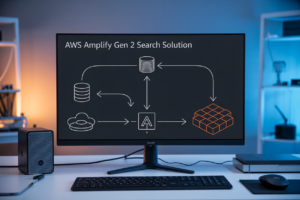AWS penetration testing has become critical as more organizations move their infrastructure to the cloud. This comprehensive guide provides a practical AWS security checklist for security professionals, penetration testers, and DevSecOps teams who need to assess AWS environments systematically.
Many teams struggle with knowing where to start when they need to pentest AWS environment components. Cloud security differs significantly from traditional network testing, requiring specialized knowledge of AWS-specific services, configurations, and attack vectors.
This checklist walks you through the essential steps for conducting thorough AWS security assessments. You’ll learn how to evaluate IAM security controls that govern user access and permissions across your AWS infrastructure. We’ll also cover network security testing techniques to identify misconfigurations in VPCs, security groups, and network access controls that could expose your resources.
Whether you’re performing your first AWS penetration testing engagement or refining your existing methodology, this guide gives you actionable steps to identify vulnerabilities before attackers do.
Establish Proper AWS Account Security Foundation
Configure multi-factor authentication for all privileged accounts
MFA acts as your first line of defense against credential-based attacks in AWS penetration testing scenarios. Enable MFA for all root accounts, administrative users, and service accounts with elevated permissions. Use hardware tokens or authenticator apps rather than SMS-based verification. Configure MFA policies that require authentication for sensitive operations like IAM policy changes, resource deletions, and API access. Test MFA bypass scenarios during your AWS security assessment to identify potential weaknesses.
Implement least privilege access policies across IAM roles
Start by auditing existing IAM roles and permissions to identify over-privileged accounts that attackers could exploit. Create granular policies that grant only the minimum permissions needed for specific tasks. Use AWS Access Analyzer to review unused permissions and remove them systematically. Implement time-bound access through temporary credentials and session policies. Regular access reviews help maintain tight security controls and reduce the attack surface during penetration testing AWS infrastructure.
Enable comprehensive CloudTrail logging for audit trails
CloudTrail provides critical visibility into API calls and user activities across your AWS environment. Configure multi-region logging to capture events from all AWS regions and enable log file integrity validation. Store logs in dedicated S3 buckets with proper access controls and encryption. Set up real-time monitoring for suspicious activities like unusual API calls, privilege escalations, or resource modifications. These audit trails become essential evidence during AWS security assessments and incident response.
Set up AWS Config for continuous compliance monitoring
AWS Config continuously monitors your resource configurations and detects deviations from security baselines. Create custom rules to check for security misconfigurations like open security groups, unencrypted storage, or public S3 buckets. Configure automatic remediation for common security issues to reduce manual overhead. Use Config’s compliance dashboard to track security posture over time and generate reports for stakeholders. This foundation supports ongoing security validation beyond initial pentest AWS environment activities.
Conduct Comprehensive IAM Security Assessment
Audit user permissions and identify overprivileged accounts
Start your AWS IAM security testing by examining user permissions through tools like AWS Access Analyzer and CloudTrail logs. Look for accounts with administrative privileges, unused permissions, and dormant users with active access keys. Check for wildcard permissions in policies and identify users who haven’t logged in recently but still maintain elevated access. Focus on service accounts that might have excessive permissions beyond their actual usage patterns.
Review cross-account trust relationships and external access
Cross-account roles present significant attack vectors during AWS penetration testing. Examine trust policies for overly permissive conditions, missing external ID requirements, and weak principal specifications. Test for assume-role chains that could lead to privilege escalation across multiple accounts. Pay attention to third-party integrations and vendor access patterns that might create backdoors into your environment.
Analyze service-linked roles and their associated permissions
Service-linked roles automatically created by AWS services often carry more permissions than necessary. During your AWS security assessment, catalog these roles and verify they align with actual service requirements. Check for custom policies attached to service roles and identify any modifications that expand permissions beyond AWS defaults. Test whether applications properly use these roles without requiring additional permissions.
Test for privilege escalation vulnerabilities in custom policies
Custom IAM policies frequently contain privilege escalation paths that attackers exploit. Test for policies allowing users to modify their own permissions, create new roles, or attach policies to existing resources. Look for conditions that can be bypassed, wildcard resources in sensitive actions, and policy versioning issues. Use tools like PolicyUniverse and Pacu to automate detection of these AWS IAM security testing vulnerabilities and validate your findings through controlled escalation attempts.
Evaluate Network Security Controls and Configurations
Scan VPC security groups for overly permissive rules
Security groups act as virtual firewalls controlling inbound and outbound traffic to your AWS resources. During AWS penetration testing, examine each security group for dangerous configurations like 0.0.0.0/0 source ranges, unrestricted port access, and unnecessary protocol permissions. Focus on high-risk ports including SSH (22), RDP (3389), and database ports (3306, 5432). Look for groups allowing broad administrative access or those with rules that haven’t been reviewed recently. Document any groups permitting traffic from untrusted networks or containing redundant rules that create security gaps. Test whether resources can communicate through unintended pathways by mapping actual traffic flows against defined security group rules.
Test Network ACLs for proper traffic filtering effectiveness
Network ACLs provide subnet-level security controls that work alongside security groups in your AWS network security testing strategy. Verify that NACLs properly filter traffic by testing both allow and deny rules across different subnets. Check rule numbering and precedence to ensure lower-numbered rules don’t accidentally override more restrictive higher-numbered rules. Examine default NACL configurations and custom ACLs for gaps that could allow malicious traffic. Test whether NACLs effectively block traffic that security groups might miss, particularly for protocols and ports that should be restricted at the subnet boundary. Pay special attention to stateless nature of NACLs, ensuring both inbound and outbound rules are properly configured for legitimate traffic flows.
Verify VPC Flow Logs capture critical network communications
VPC Flow Logs provide visibility into network traffic patterns and are essential for AWS security assessment activities. Enable flow logs at VPC, subnet, and network interface levels to capture comprehensive traffic data. Test whether logs successfully capture rejected traffic, accepted connections, and metadata like source/destination IPs, ports, and protocols. Verify log delivery to CloudWatch, S3, or third-party SIEM systems works reliably. Check that flow logs include traffic to and from AWS services, load balancers, and NAT gateways. Examine log retention policies and ensure they meet compliance requirements. Test log analysis capabilities by searching for suspicious traffic patterns, failed connection attempts, and unusual data transfer volumes that might indicate security incidents or misconfigurations.
Perform Storage Security Penetration Testing
Assess S3 bucket policies and public access configurations
Start your AWS storage security penetration testing by examining S3 bucket configurations for public access vulnerabilities. Check bucket policies, access control lists (ACLs), and public read/write permissions that could expose sensitive data. Use tools like ScoutSuite or Prowler to identify misconfigured buckets with overly permissive policies. Look for buckets allowing anonymous access, weak conditional statements in policies, and improperly configured CORS settings. Test for directory traversal attacks and verify that bucket versioning and MFA delete requirements are properly implemented.
Test encryption settings for data at rest and in transit
Verify encryption configurations across all AWS storage services during your AWS security assessment. Check that S3 buckets use server-side encryption (SSE-S3, SSE-KMS, or SSE-C) and that encryption in transit is enforced through HTTPS-only policies. Examine EBS volume encryption settings, RDS encryption at rest, and DynamoDB encryption configurations. Test for weak encryption keys, improper key rotation policies, and services that transmit data without TLS encryption. Validate that customer-managed KMS keys have appropriate access policies and audit trails enabled.
Evaluate backup and snapshot security controls
Review backup and snapshot security mechanisms as part of your comprehensive AWS penetration testing approach. Examine EBS snapshot permissions to ensure they’re not publicly shared or accessible to unauthorized AWS accounts. Check RDS automated backup encryption settings and cross-region replication security. Test snapshot restoration processes for proper access controls and verify that backup retention policies align with security requirements. Look for exposed AMI snapshots that might contain sensitive configuration data or credentials.
Scan for exposed database instances and weak authentication
Conduct thorough scanning for database instances with weak security configurations in your AWS environment. Check RDS instances for public accessibility settings, weak master passwords, and missing encryption. Test database security groups for overly permissive inbound rules allowing unrestricted access. Examine DynamoDB table policies for weak access controls and missing encryption settings. Verify that database instances require secure authentication methods, have proper logging enabled, and don’t use default credentials or weak password policies.
Test Application and Service Security Weaknesses
Analyze Lambda function code for security vulnerabilities
Start your AWS application security testing by examining Lambda function source code for common vulnerabilities like hardcoded credentials, improper input validation, and insecure environment variable handling. Focus on dependency scanning, reviewing IAM permissions attached to functions, and testing for injection attacks through function parameters. Check for overly permissive execution roles and validate that sensitive data isn’t logged inappropriately.
Evaluate API Gateway authentication and authorization controls
Test API Gateway endpoints for authentication bypasses, weak authorization mechanisms, and rate limiting effectiveness. Verify JWT token validation, API key security, and CORS configurations. Attempt unauthorized access to protected resources and validate that proper error handling prevents information disclosure. Review resource policies and ensure throttling limits protect against abuse during your AWS security assessment.
Test container security in ECS and EKS environments
Scan container images for known vulnerabilities using tools like Trivy or Clair before deployment. Examine ECS task definitions and Kubernetes manifests for security misconfigurations, including excessive privileges and exposed secrets. Test runtime security by attempting container escapes and validate that security contexts prevent privilege escalation. Review network policies and service mesh configurations for proper segmentation.
Assess serverless application security configurations
Evaluate serverless applications for proper environment variable encryption, secure API integrations, and appropriate timeout settings. Test Step Functions for state machine vulnerabilities and review DynamoDB access patterns for over-privileged operations. Validate that CloudWatch logs don’t contain sensitive information and assess EventBridge rules for potential event injection attacks during AWS penetration testing activities.
Review third-party integrations and external dependencies
Audit all external API connections, webhooks, and third-party service integrations for secure communication protocols and proper authentication. Validate SSL/TLS configurations and certificate handling across integrated services. Check for exposed credentials in configuration files and test for SSRF vulnerabilities in services that make outbound requests. Review vendor security assessments and compliance certifications for integrated solutions.
Execute Advanced Threat Detection and Response Testing
Test AWS GuardDuty detection capabilities against simulated attacks
Deploy controlled attack scenarios to validate GuardDuty’s detection effectiveness in your AWS security assessment. Run reconnaissance activities, simulate credential compromise attempts, and test cryptocurrency mining scenarios to verify threat detection accuracy. Use tools like Stratus Red Team or custom scripts to generate malicious network traffic patterns, unusual API calls, and suspicious data exfiltration behaviors. Monitor GuardDuty findings to identify detection gaps and adjust sensitivity levels for optimal coverage without excessive false positives.
Evaluate Security Hub integration and alert prioritization
Security Hub centralizes findings from GuardDuty, Inspector, and third-party security tools during AWS penetration testing activities. Test the correlation engine’s ability to aggregate duplicate findings and prioritize high-severity threats. Verify that custom insights and automated remediation workflows trigger appropriately when critical vulnerabilities surface. Review compliance standard mappings against frameworks like CIS AWS Foundations Benchmark to ensure comprehensive security posture visibility across your AWS infrastructure.
Verify incident response procedures and automation workflows
Execute tabletop exercises simulating real-world attack scenarios to test your AWS threat detection testing procedures. Validate automated response playbooks through Systems Manager, Lambda functions, and CloudWatch Events integration. Test notification mechanisms including SNS topics, Slack webhooks, and PagerDuty escalations to confirm rapid incident acknowledgment. Document response times, containment effectiveness, and recovery procedures to identify bottlenecks in your AWS security checklist implementation and improve overall incident handling capabilities.
Penetration testing your AWS environment doesn’t have to feel overwhelming when you break it down into these six core areas. By starting with a solid security foundation and working through IAM assessments, network configurations, storage security, application testing, and threat detection, you create a thorough evaluation process that covers all the critical attack vectors hackers might exploit.
The key to successful AWS pentesting lies in being systematic and consistent with your approach. Don’t skip steps or rush through any section – each component builds on the others to give you a complete picture of your security posture. Schedule regular pentests using this checklist, document your findings clearly, and always remediate the highest-risk issues first. Your AWS environment will be significantly more secure, and you’ll sleep better knowing you’ve done your due diligence to protect your cloud infrastructure.




















